By Mike Smith
One of the best developmental tactics I use to create vision in players, especially goal scorers and ball handlers, is dropping my wing mid back and in to create a double overlap with the outside back. The purpose is two fold: One, if you do not feel your team is able to expose space on the wing but you want to push your outside back up a bit, dropping in the wing mid first provides cover. Second, if that wing mid is one of your strongest attacking players, their movement back, in and then out will off balance your opponent. It will also give them a better opportunity to see chances developing thus improving their vision and creativity. For example:
Below the wing back is checking in to receive a pass from the center back.
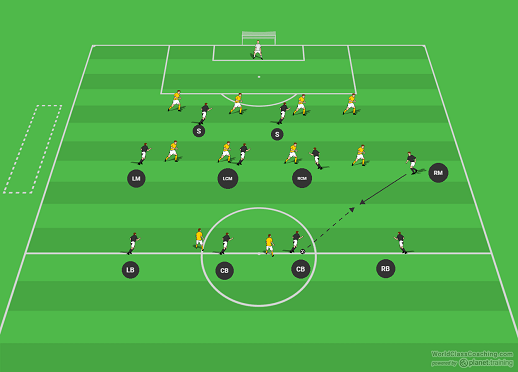
This opens up space on the wing, where there will probably be a 2 v 1 so a give and go ( shown below ) should spring the outside right back. If the right mid holds their run a bit, the shape is still in tact and there is no vulnerable space exposed.
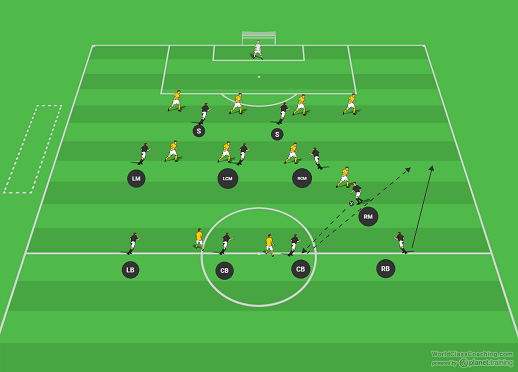
As the rest of the formation pushes up the field, the advantage is clear. The right mid has several options, and if they are a burner, the wing is wide open. As shown below, any adjustments to step out here by the defense will expose dangerous space to the attacking side.
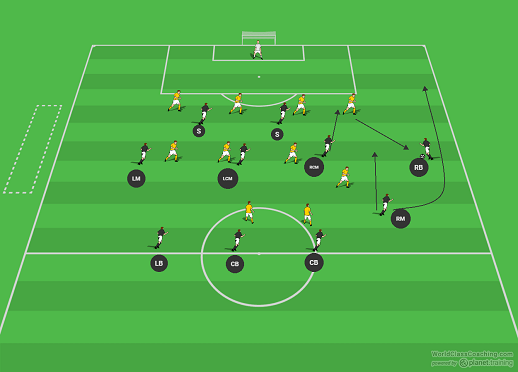
Shown below is the extent to which the defending mid is isolated and there is no real way to recover here with out leaving an attacker open, exposing space in front of the goal or both.
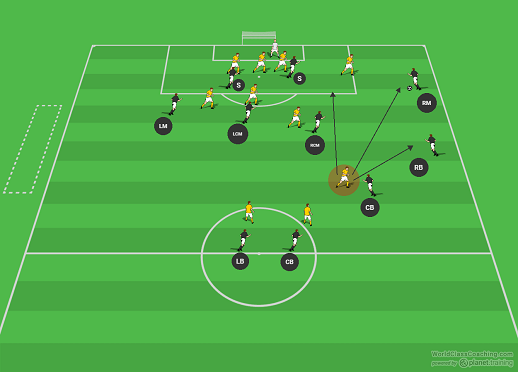
Try this easy pattern to implement the double overlap into your system of play.
Set Up
Set up a 30 yd x 30 yd grid as shown below. Add two additional cones at the bottom left corner of the grid one about 15 yds back and one about 15 yds left of the bottom corner of the grid. At the top right of the grid, again about 15 yds up and over, add a gate. 3 players at a time run the pattern. Play starts when the player at the bottom left cone ( as shown ) passes out to the wide player at the bottom left of the grid. As this is happening, a player who was in the top right corner of the grid, checks down to the bottom left corner to receive a pass and then give it back. The starting player is moving up to the far right corner of the grid, while the player inside the grid makes a bending run back and out on their way to the pole gate.
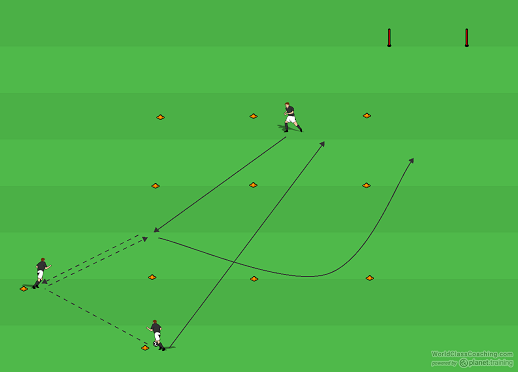
The wide player then sends the ball back up to the players at the right corner of the grid. This player passes to the overlapping player who takes the ball in stride and dribble through the gate, completing the double over lap ( shown below ).
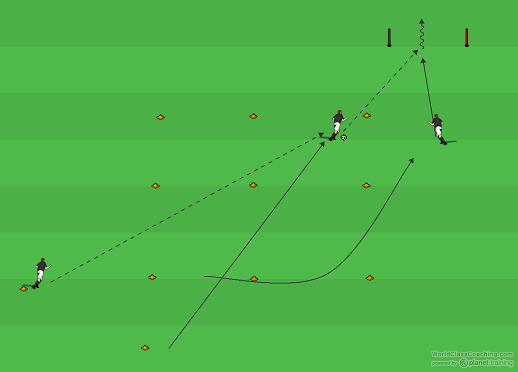
Progression
As the players get comfortable with the pattern, add one passive defender to shadow the player in the grid with out attempting to tackle the ball. A final progression can allow the defender in the grid to attempt to steal the ball as long as they start their check down with the attacking player. A 3 v 1 here is a realistic game scenario.
Coaching Points
Good passing and timing are the key factors here. This isn’t a busy work drill, do it well here and you will be able to do it well in a game, the coach should keep the players sharp here.
By Mike Smith
Currently the Head Coach for University Heights Academy Boys Soccer in Hopkinsville, KY , Mike is in his 14th year as a high school head coach with 23 years coaching experience overall and 34 year as a student and fan of the game. He holds a USSF D License.


